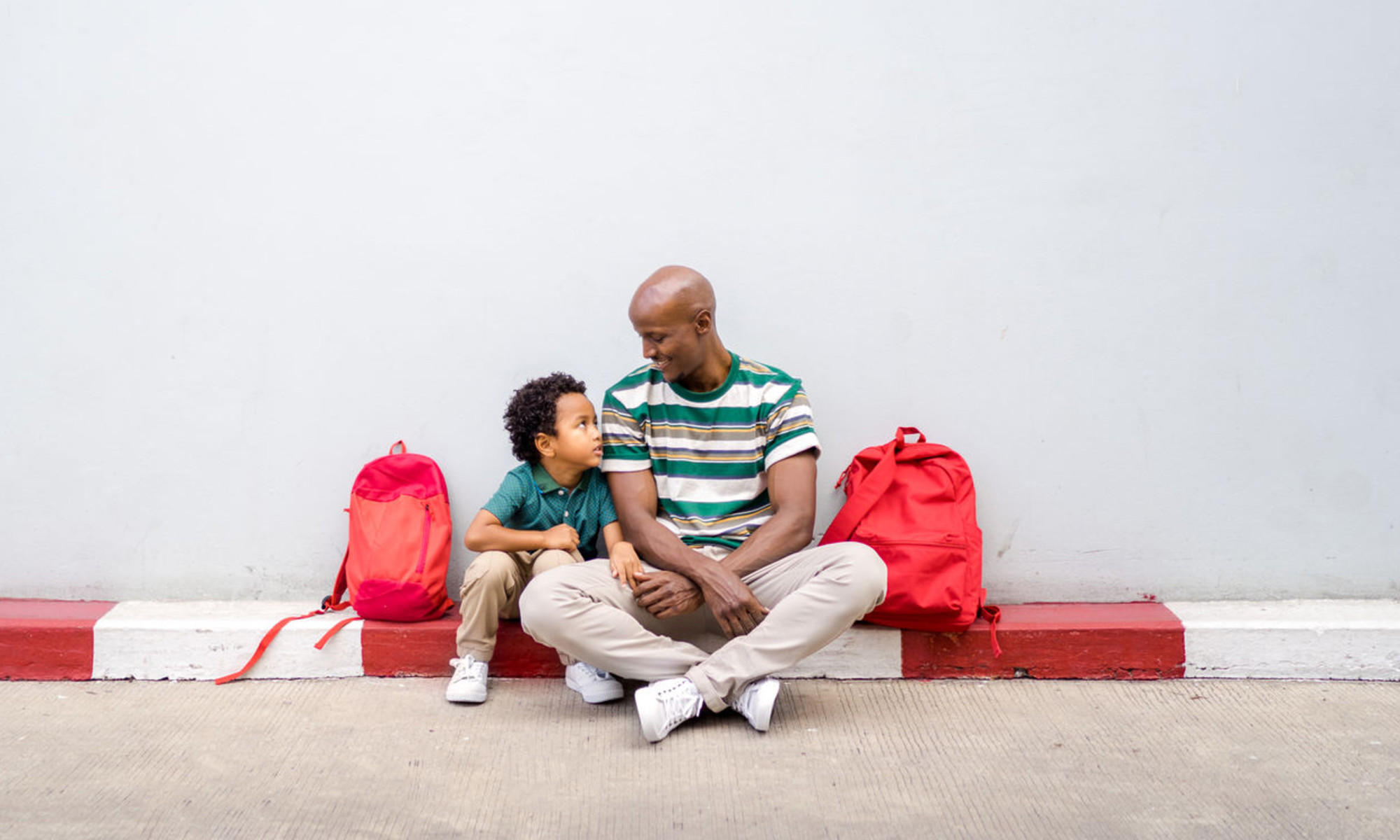How A Neuroscientist Helps Kids Deal With Temper Tantrums
Here is an idea of something you can do with your child: sit down and create your own “mental first aid kit.”

Image by Jovo Jovanovic / Stocksy August 6, 2023 In her new book, How to Help Your Child Clean Up Their Mental Mess, neuroscientist and communication pathologist Carline Leaf, PhD, BSc explains how to best support your kid's developing brain, build resilience, and manage their mental health. The advice is all backed by cutting-edge clinical research—yet informed by relatable anecdotes and case studies. In this excerpt from the book, Leaf explains why you should develop a mental health first aid kit for your kid. 
Advertisement
This ad is displayed using third party content and we do not control its accessibility features.
When we calm down the mind, brain, and body, we can start to get to the root of what is affecting us. Think about it like this: we all generally have first aid kits in our homes so that when anyone in the family gets a cut or a scrape, there will be ways to attend to that immediate wound. We are thus ready to tend to our immediate physical health problems, but we often don’t consider that our mental health also needs tending. Here is an idea of something you can do with your child: sit down and create your own “mental first aid kit.” Fill this kit with all the things that will help you and your child manage their mental health in the immediate moment of feeling overwhelmed. Keep this kit near your regular first aid kit to remind you that your mental health is just as important to take care of as your physical health. You could include a drawing that makes your child happy, for example, or maybe an object that calms them or temporarily distracts them such as a fidget spinner or a cute stress ball. You could even put in a photo of them at their favorite place or with one of their favorite people, a toy they love, or a book that calms them down. Here are some simple brain preparation exercises you can do with your child whenever needed.Breathwork
A simple and generally foolproof decompression exercise for children ages 3–10 is deep breathing. One of the best ways to do this with your child is by teaching them to take a deep breath in for three seconds, then forcefully expel it for seven seconds. Repeat this three to five times. Your child can do this standing up, sitting, or lying down—whatever is most comfortable for them.
Advertisement
This ad is displayed using third party content and we do not control its accessibility features.
What to say and do:
You can describe the process like this: “Put your hand on your tummy. Now, take a very big, deep breath in while I count to three, then push it out as hard as you can while I count to seven.” For younger children, simply tell them to copy you taking a deep breath in and forcing the air out, as they may not be able to follow your counting.
You can also first show them what to do. Demonstrate the deep breathing, then say, “Now, let’s try this together, because it will make you feel so much better!” Practice doing this a few times until your child gets the hang of this exercise.
Movement
Movement is especially beneficial to children, as it can help them release endorphins1, serotonin, and adrenaline while also increasing their energy levels.
Advertisement
This ad is displayed using third party content and we do not control its accessibility features.
What to say and do:
To begin this activity, pick a movement for you and your child to do for a few minutes, one that you know they will enjoy. You can also ask your child to pick a movement. Some examples are jumping jacks, skipping, dancing, wiggling feet or toes, or something as simple as walking around the living room. You and your child may feel awkward doing some of these movements, and that is okay. Laugh at yourselves, laugh with each other, and allow yourselves to be silly for a moment.
Ask your child to focus on how the movement feels in their body. Do they feel excited, tired, silly? This is like an active type of meditation for children that helps them focus on how their body feels. The more you do exercises like this, the more you will teach your child to be fully present within their body and put their focus on what they’re doing in the moment.
This kind of intentional and directed movement is a way of helping your child redirect their thoughts from what they are struggling with by focusing on their body and what they can do with it.
This activity can go on as long as it needs to. The key is to move until you reach a point where you feel your child is in a calmer state of mind.
Creativity
Creativity is also a way to calm down the mind, brain, and body and decompress. Creativity is also an excellent, tangible way to release overwhelming emotions.
Advertisement
This ad is displayed using third party content and we do not control its accessibility features.
What to say and do:
The first thing to do is ask your child to pick a creative activity they love to do. Some examples are drawing, painting, playing with playdough or LEGOs, and so on.
Ask your child to draw, color, paint, or shape three things that they love to do or three of their favorite memories. This creative visualization will help your child focus their attention on what brings them joy, which will in turn help them manage any emotions that feel overwhelming in the moment.
As your child creatively visualizes a happy thought or memory, they are building healthy neural networks into their brain that are like support systems or insurance policies they can fall back on in times of need. They are essentially building up their mental resilience!
The takeaway
Other examples of brain preparation and decompression activities include teaching your child positive affirmations, asking your child to repeat a quote or a prayer that is comforting to them, or listening to music or asking your child to play their instrument if that is something they enjoy. The list above is just a guide, as there are many possible decompression activities you can do with your child.
The key is to focus on what your child loves and what brings them joy and helps them calm down. Then you use this knowledge to create your own unique way of helping your child calm their mind, brain, and body.
Try to avoid rushing the process or getting annoyed with your child if they are battling to focus or feeling emotional. The increasing rate of toxic electromagnetic energy in the mind and brain from such hurry and annoyance in an elevated situation will only grow unhealthy trees and compound the issue. This negative energy in and around us can pollute us and block clarity of mind in the situation.
Advertisement
This ad is displayed using third party content and we do not control its accessibility features.

 Troov
Troov 

































